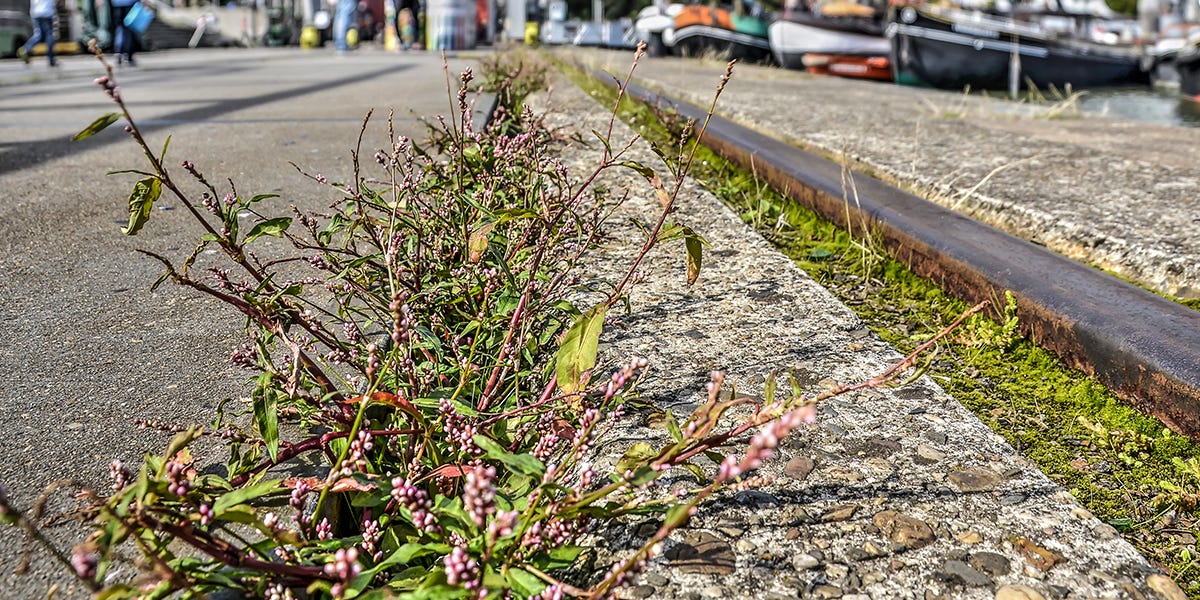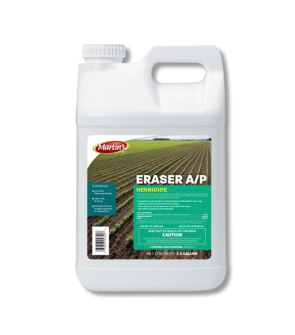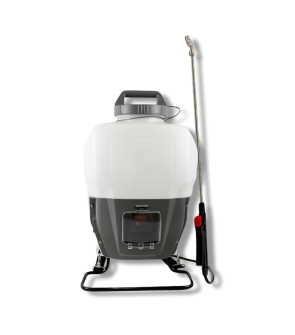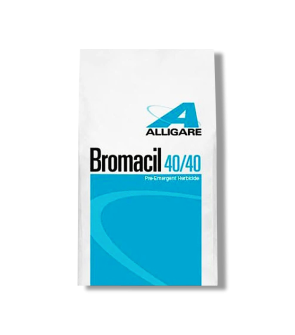Bare Ground Management
Most Effective Products
Bare Ground Weed Control: Keep Weeds Away From Commercial Areas
This article is a general DIY guide that discusses control of weeds and grasses growing near or in undesired areas like driveways, and other commercial areas. By reading our guide, commercial property owners will learn how to eliminate various broadleaf weed and grass populations by following the listed steps and professional quality products.
Bare ground weed control is a key part of any integrated vegetation management program. Managing a large industrial plant or other commercial properties where you cannot have any weeds invading and damaging your equipment can be a frustrating task to take on without the right approach and products to help you.
Bare ground weeds refer to any type of vegetation that emerges in an area where they shouldn’t be. An example is grass or some other plant rising up from a crack in the pavement, on the sidewalk or in an industrial work area.
Weeds can establish in areas such as on railroad tracks, the shoulder area on a highway, electrical substations, refineries, storage tank areas, pipelines, parking lots, tower bases, lumber yards, fences, driveways, and around signposts—any place where vegetation can potentially grow but isn’t wanted or it could become a safety hazard if the vegetation is left unchecked.
By following our DIY guide on bare ground weed control, you will be able to successfully kill all the vegetation that is intruding in the area and prevent it from regrowing for up to 6 months or longer. Follow the steps below to get started clearing up those weed infestations in a fast, easy and affordable way.
Identification

In order to choose the best treatment approach, you need to know what weeds you are trying to get rid of.
There are a large variety of weeds which can grow on right-of-ways. Some can be minor, while others can be major infestations which can obstruct vision, create cracks in asphalt or cause a tripping or fire hazard. Some weeds are easily identifiable while other vegetation can be tougher to pin down the plant type.
Determine the types of weeds or vegetation that need to be controlled. We encourage you to closely observe the weed and then check out our broadleaf and grass weed library to try and see if you can pinpoint which specific weed is present.
Inspection

Once you have pinpointed the problem weed or weeds, it is important to perform a thorough inspection to mark where the weeds are, how much has been established and if they are growing in areas that may complicate the treatment process.
Where to Inspect
Weeds may grow around power lines or electrical wiring which can make treatment via liquid spray application risky. Walk the property and determine if there are any areas where any unwanted damage to plant material might occur. Soil sterilants should not be applied in areas where desirable plants are growing.
Look around your fences and driveway. Weeds do not need an exisiting crack or crevice to make its way through your lawns ground. Depending on the weed, the foliage can work itself through any solid material such as abondoned cars, other machinery, or cemenent and asphalt surfaces in your yard.
What to Look For
Look for areas where vegetation is growing. A good approach to inspecting for total vegetation control is dividing treatment sites into three control categories, based on vegetation present: Normal, Sensitive, and Difficult.
- 'Normal' areas would be sites where a typical bare ground treatment of herbicides could be used with comparatively little risk and would be effective on the vegetation present.
- 'Sensitive' areas would be those areas where non-target plants are in close proximity to the treatment area, or site conditions favor off-site herbicide movement; essentially any area where the risk of accidentally damaging desired plants is high. Sensitive area treatments would not include herbicides with broad-spectrum soil activity.
- Areas designated as 'Difficult' would contain plant species that would not be sufficiently controlled with a normal bare ground herbicide mix, such as brush, or herbaceous species such as Japanese Knotweed. Rather than treating the entire site with a herbicide mixture potent enough to control extremely difficult species, it is better to spot-treat the difficult species and use a less potent mixture on the majority of the area.
Bare Ground Weed Control Methods
Once you know where to focus your bare ground applications, prepare yourself by wearing the proper personal protective equipment (PPE) before mixing and application. Next, make sure the spray equipment you use is properly calibrated and mixed according to the application rates on the label.
Our top recommended products to achieve bare ground control is Martin's Eraser A/P Herbicide. This product is a great non-selective herbicide that will kill all unwanted vegetation. We recommend mixing Martin's Eraser A/P herbicde with a nonionic surfactant like Alligare 90 to help the material adhere more onto the weeds.
Once you have applied your post-emergent herbicide, you will need to apply a soil sterilant herbicide designed with pre-emergent control like Bromacil 40/40 Bare Ground Herbicide. This will help to prevent all future vegetation, including weeds from regrowing in the area.
Unlike other pre-emergent herbicides, which only affect weed seeds, soil sterilants like Bromacil 40/40 Bare Ground Herbicide are designed to kill all wanted and undesired vegetation in the application site. If you are wanting some desired vegetation, then Bromacil 40/40 Bare Ground Herbicide is not recommended.
Do not use Bromacil 40/40 Bare Ground Herbicide under pavement in residential properties such as driveways, or in recreational areas, including jogging or bike paths, tennis courts, or golf cart paths.
Timing is everything. It is important to treat the area before plants have begun to sprout and especially before they produce seedheads.
Step 1: Apply Post Emergents

The first step to bare ground control is killing all current vegetation. You will want to use a systemic post-emergent herbicide that will kill the current vegetation down to the root like Martin's Eraser A/P Herbicide. This product will need to be mixed with water and as a non-selective it would be best to use a handheld pump sprayer to control drift.
Determine how much Martin's Eraser A/P Herbicide you will need by calculating the square footage of the area you wish to treat. To do this, measure the length and width of the treatment site in feet then multiply (length X width = square footage). For acreage, take the square footage and divide it by one acre (square footage / 43,560 sq. ft. = acre).
Use 1 quart per acre if annual weeds are less than 6 inches in height or runner length and 1.5 quarts to 4 quarts per acre if annual weeds are over 6 inches in height or runner length or when weeds are growing under stressed conditions. For annual weeds over 6 inches tall, or for smaller weeds growing under stressed conditions, use a 1- to 2-percent solution. This means with one gallon of finished solution, you will mix in between 0.64 and 2.56 fl. oz. of Eraser A/P.
For best results, use a 1.5-percent solution on harder-to-control perennial weeds such as Bermudagrass, dock, field bindweed, hemp dogbane, milkweed and Canada thistle. For low volume directed spray applications for perennial weeds, use a 5- to 10-percent solution of this product
To mix, fill your sprayer tank halfway with water, add measured amount of Martin's Eraser A/P Herbicide, then pour remaining half of water into tank. Close the lid and shake until solution is evenly mixed. Once mixed, apply the mixture evenly to the top and bottom of the weeds leaves, but not to the point of run-off.
This product may be applied to non-crop areas such as along and in fences, driveways, dry ditches, pastures, rangelands, storage areas, and prior to planting landscape ornamentals and other labeled areas.
Step 2: Apply a Soil Sterilant Application with Bromacil

Once a post-emergent bare ground herbicide applied and the vegetation has died off, Bromacil 40/40 Bare Ground Herbicide should be laid down afterward as a soil sterilant. Once applied, Bromacil 40/40 Bare Ground Herbicide will ensure that no vegetation grows in the treatment site for 1 year.
We always recommend using an indicator dye like Vision Pro Max Indicator Dye, so you know exactly where you have applied product materials.
For small areas, you can mix Bromacil in a hand sprayer or sprinkle Bromacil on your treated areas. 1/4th of a cup of Bromacil 40/40 in a gallon of water can treat 200 sq. ft. On a fan spray nozzle setting, spray evenly to the treatment areas where you would like bare ground.
Depending on the state you live in and the weed you are encountering, application rates will vary between 6 to 16 lbs. of Bromacil 40/40 per acre.
This product may be applied in uncultivated non-agricultural areas (for example: airports, highway, railroad and utility rights-of-way, sewage disposal areas), uncultivated non-crop producing areas (for example: farmyards, fuel storage areas, fence rows, barrier strips) and outdoor industrial sites (for example: lumberyards, pipelines and tank farms).
Key Takeaways
Why Weeds and Grasses Grow in Crevices?
- Despite the high temperature environments, compaction of soil, and minimum space in crevices within solid surfaces like driveways, weeds and some grass species survive. Usually these unwanted foliage grow in these areas, because they hold high amounts of soil, retain more water than other parts of your property, and have less competition to grow.
What is Bare Ground Management?
- Bare ground management is the process of eliminating vegetation in areas that may hinder industrial work sites or become a safety hazard.
How to Perform Bare Ground Weed Control
- Identify the weed in order to know what herbicide treatment will be best for its control. Apply herbicides at the ideal times before the plants have sprouted or produced seedheads. Follow up as needed. Check the site to see whether a repeat application is required to put a stop to unwanted regrowth or new plants.













































































































































































































































































































































































































































































































































